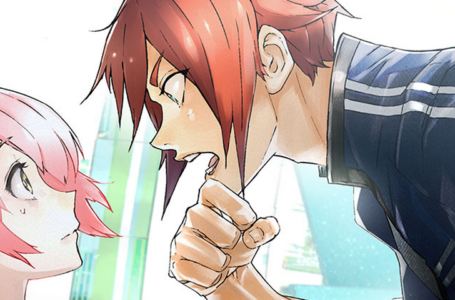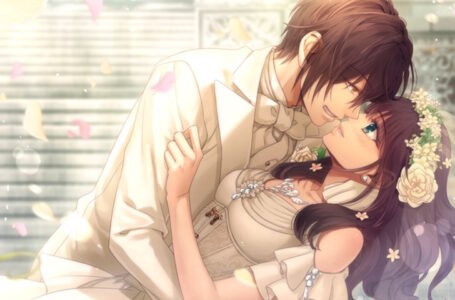The History of Lewd: Little Princess
We’ve touched on this game previously, but I thought it was high time we took a proper look at Little Princess from Champion Soft, the company that would subsequently become Alicesoft — best known today as the creators of the Rance series.
The interesting thing about Little Princess, which was first released for NEC PC-88 and Fujitsu FM-7 in 1986, is that it was presumably originally intended to be a standalone story. It did get a sequel called Little Vampire in 1988, but for the most part it stands by itself — albeit with a bit of a cliffhanger at the end.
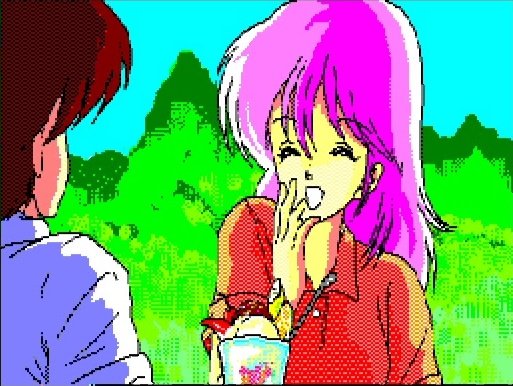
Once the Rance series got underway, however, it seemed that the events of Little Princess would make an ideal “prequel” to set up some of Rance’s lore — and so this game in particular is, to this day, considered to be the “origin story” of the Rance world’s current (and rather unwilling) Archfiend Miki. Not only that, but its protagonist Kentarou appears in several Rance games, too, with his most notable appearance coming as part of the strategic title Sengoku Rance.
Little Princess begins with Kentarou and Miki out on a nice picnic in the park, when suddenly Dracula (subsequently retconned to the Rance world’s Archfiend Gai) snatches Miki away, having determined her to be a suitable successor for his waning Archfiend powers. Kentarou, being a thoroughly decent sort of chap (or, well, so one might believe at the outset of the story) rushes off to rescue Miki and somehow manages to isekai himself right out of Dimension 3E2 (a dimension that is almost, but not exactly the same as our world, particularly modern-day Japan) and onto The Continent, the main setting of the Rance series.
From there, it’s up to Kentarou to figure out exactly how he’s going to get into Dracula/Gai’s castle, how he’s going to rescue Miki, and perhaps how on Earth the pair can get back to where they came from.
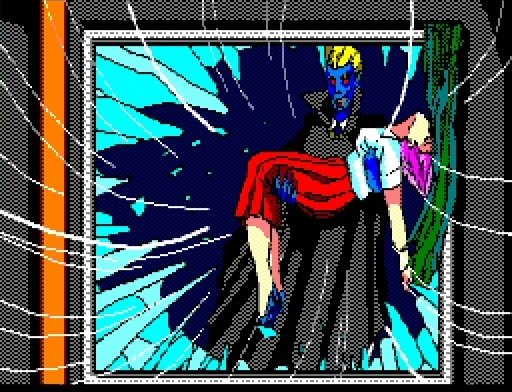
The game unfolds as a text adventure where you type in commands rather than select them from a menu. Interestingly, though, there’s still a distinctly “visual novel” feel to how the game unfolds, since like in adventure-style visual novels we’ve previously seen (with Ring-Out!!, Nocturnal Illusion and Three Sisters’ Story being the best examples) performing the same action multiple times in succession tends to reveal additional information each time, whereas this was not typically part of the western text adventure tradition.
It’s kind of easy to understand why, because you have no real way of knowing that, say, in order to find several useful items in the very first room of the game, you need to examine a seemingly innocuous patch of grass multiple times; western text adventures from the era would typically make collectible objects and interactable nouns in a location immediately obvious, but in Little Princess you’re expected to examine everything thoroughly and multiple times — often using the visual image of the location as a cue rather than the text descriptions.
Not only that, but there are several parts of the game where a seemingly obvious use of an item is actually the wrong thing to do, and handing over an item that you will need later is an excellent means of getting yourself stuck and needing to start over — or at least reloading a save if you remembered to make one. Still, since the whole game takes a grand total of about 20 minutes to get through if you know exactly what you are doing, it’s generally not too much of a problem to just go back to the beginning and try again.
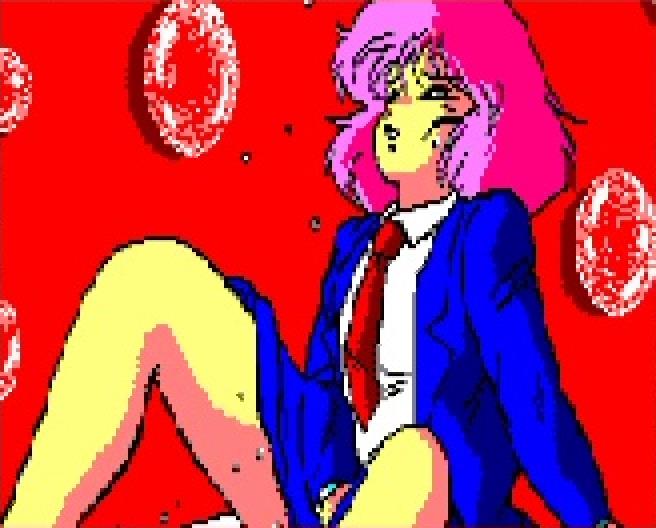
Early text adventure games in both the western and eastern traditions were notorious for having obtuse solutions to problems and puzzles; this was sometimes (though not always) a means of directing people towards premium-rate hint lines and purchasable hint books.
Little Princess really takes the biscuit with some of its puzzle solutions, however; I am baffled as to how anyone is expected to know the correct means of making a girl feel happy enough to give you an important hint that is critical to finishing the game is to rape her. Even leaving aside the moral implications of such an act — and her unexpectedly positive response to it — it’s not a word one would typically think to type into a text-based adventure game.
But perhaps this is something of a cultural difference at play here. Not about rape, which is considered a reprehensible act worldwide (regardless of how willing creators are to incorporate it into fiction) — but about lewd games in general. Back in the ’80s, home computer games in the west were rarely lewd in any way — we got the odd Strip Poker game now and then, but certainly very little that either implied or explicitly depicted sexual activities. And when they were — Sierra’s Softporn Adventure and Leisure Suit Larry series spring to mind — sex was treated as a joke.
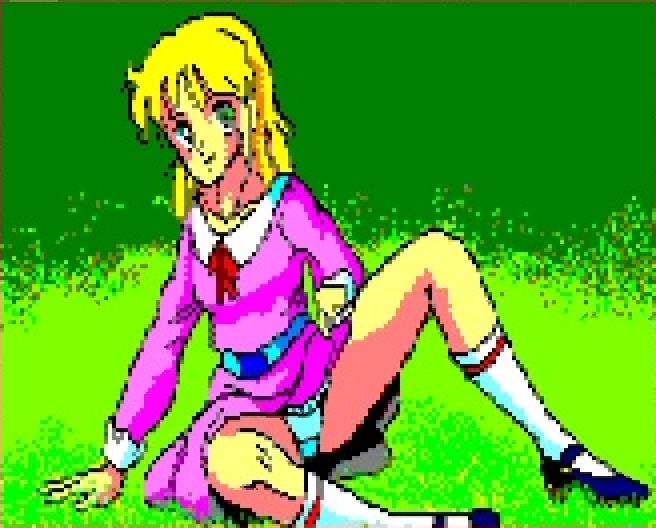
Over in Japan, meanwhile, horny gamers were getting their fill of sauciness from the early ’80s onwards, with NEC’s PC-88 and PC-98 platforms in particular becoming notorious for their wide selection of eroge.
In other words, by the time Little Princess came out in 1986, it’s entirely possible that a Japanese text adventure player would consider having sex with a character to be a perfectly plausible thing to try if all other options had been exhausted. Or perhaps if they simply felt the on-screen character was attractive. Remember, games are fantasy; typing “rape girl” into a text adventure doesn’t mean someone wants to do it for real!
Outside of this one particular instance, which some would argue is the one thing more than anything else that makes Little Princess feel like a Rance game, the lewdness is often somewhat unexpected.
While exploring the strange new world he finds himself in, Kentarou waking a sleeping girl causes her to forcibly have sex with him, knocking him out and sending him back to the start point — and putting you in a position where you won’t have enough items to beat the game.
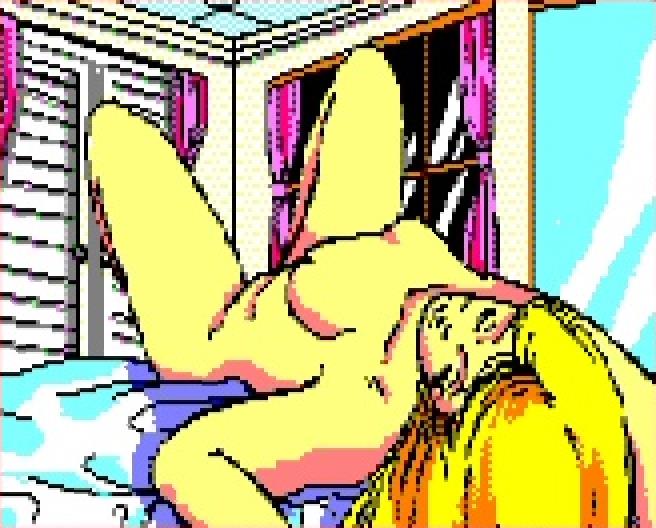
When attempting to enter Dracula’s castle, providing a lonely girl guarding the gate with her heart’s desires causes her to get naked and then die, revealing the true entrance.
Inside the castle, there’s a feisty girl who wants to fight; defeating her means she ends up naked and dead, only to resurrect herself (and restore her clothing) the next time you enter her room. And, perhaps most inexplicable of all, defeating the aforementioned girl twice causes the daughter of Dracula in the next room to end up naked and unconscious in her chair. Why? I have no idea, nor do I know how or if any of that is relevant to your overall quest.
Even bashing through the game with a walkthrough at your side, Little Princess feels like a bizarre fever dream in which a series of seemingly unconnected events eventually somehow culminate in your unexpected victory. I can’t even imagine how difficult it must have been for people to solve these puzzles for themselves back when the game was first released; one can only wonder if anyone ever actually finished Little Princess in the ’80s.
Is it a journey worth taking today? Perhaps, for curiosity’s sake — don’t go into this expecting in-depth narrative or characterisation, though. It’s simply an interesting example of what Japanese adventure games looked like back in the ’80s — and how games like this were a stepping stone to the menu-driven experiences of the PC-98 in the ’90s.
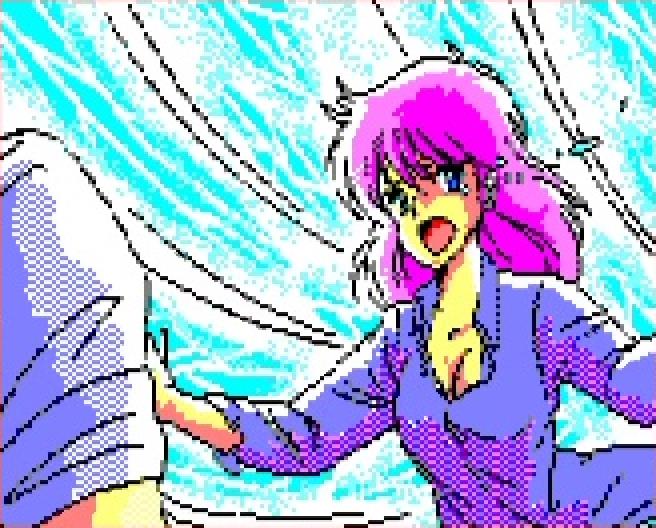
If you’re interested in Rance lore — and you should be, since that setting is masterfully crafted — Little Princess itself doesn’t really tell you anything you can’t learn in a more enjoyable form elsewhere, but it’s still interesting to experience those events first-hand. Not only that, but the fact Kentarou is forced to perform a variety of bizarre actions in order to solve Little Princess is actually parodied somewhat when he appears in later Rance games — a nice callback.
I’m glad I gave the game a go, just to say I’ve experienced it. I wouldn’t necessarily recommend the experience — but I certainly wouldn’t discourage anyone from seeking it out if they’re curious, either. It’s always interesting to see an established developer’s earlier work, and Little Princess is nothing if not interesting at the very least.
Join The Discussion
Rice Digital Discord
Rice Digital Twitter
Rice Digital Facebook
Or write us a letter for the Rice Digital Friday Letters Page by clicking here!
Disclosure: Some links in this article may be affiliate links, which means we may earn a small commission if you make a purchase after clicking on them. This is at no additional cost to you and helps support Rice Digital!
- Letter from the Editor: passing the torch - June 30, 2023
- Super Woden GP 2 is looking promising - June 30, 2023
- Inti Creates is making a 32 bit-style Love Live action platformer - June 26, 2023





